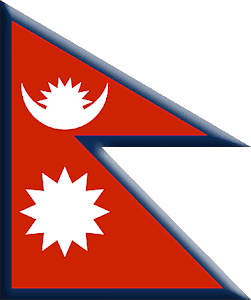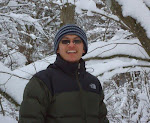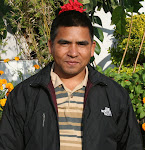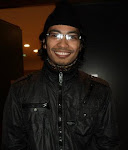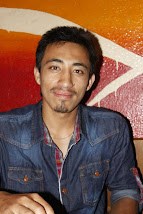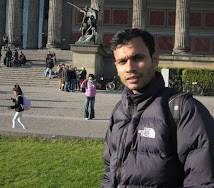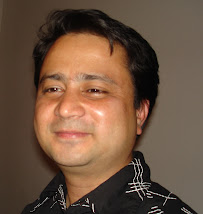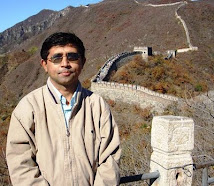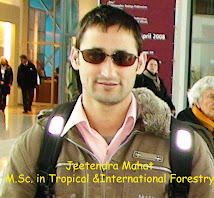 "When human beings are full of joy, that's when they are beautiful.
"When human beings are full of joy, that's when they are beautiful.
We are not beautiful when we are full of hate, when we are full of anger.
We wear joy very well,
We wear peace very well, That's when we shine" -Prem Rawat
Read more...
Thursday 31 July 2008
Quote of the DAY!
Posted by
Krajend
at
08:34
![]()
Tuesday 29 July 2008
Nepal enters into semifinal of ACC elite cup cricket
 first use of the track, Singapore were also up against a team which fielded superbly and allowed their batsmen very little opportunity to be aggressive. Singapore just couldn't get any momentum going at all and with the top-order dismissed within the 13th over the remaining batsmen were as much intent on survival as run-scoring.Nepal kept the pressure on. Danger-man Munish Arora bowled by Paras Khadka for just 4 off 19 deliveries. A partnership between Chaminda Ruwan and Christopher Janik where both batsmen looked comfortable against the Nepali bowlers offered hope to Singapore but a poor call by his captain had Janik run-out by short
first use of the track, Singapore were also up against a team which fielded superbly and allowed their batsmen very little opportunity to be aggressive. Singapore just couldn't get any momentum going at all and with the top-order dismissed within the 13th over the remaining batsmen were as much intent on survival as run-scoring.Nepal kept the pressure on. Danger-man Munish Arora bowled by Paras Khadka for just 4 off 19 deliveries. A partnership between Chaminda Ruwan and Christopher Janik where both batsmen looked comfortable against the Nepali bowlers offered hope to Singapore but a poor call by his captain had Janik run-out by short  extra-cover. Ruwan (40) went soon after, and none of the remaining Singapore batsmen able to assert themselves against some quality wicket-to-wicket bowling.
extra-cover. Ruwan (40) went soon after, and none of the remaining Singapore batsmen able to assert themselves against some quality wicket-to-wicket bowling.
Posted by
Krajend
at
21:37
![]()
Labels: Proud to be Nepali
Sunday 27 July 2008
Beauty inside you
 Despite all the problems, all that things that are wrong,
Despite all the problems, all that things that are wrong,
There are some things that are really, really good.
Despite all the ugliness, there is something very, very beautiful
Despite all the mistakes, there is one thing that is perfect
And, that perfection, that beauty is in you.
Read more...
Posted by
Krajend
at
10:32
![]()
Labels: Quote of Day
Saturday 26 July 2008
An Introduction to world renowned Goettingen university
Georg-August-Universität Göttingen (founded in 1737): This is the university first established by the King (probably the British king) in 17 37. He had established two other universities in the world. One in Columbia and another one in the USA.
37. He had established two other universities in the world. One in Columbia and another one in the USA.
Key data about the university: We have
• 13 faculties, 180 institutes
• 24,600 students
• 11.6 % students from abroad (new entrants: approximately 20 %)
• 13,000 employees (including Medicine), of whom 404 professors
• 114 programmes of study (71 Bachelor / 22 Master)
(43 people linked with university won Nobel prize) 
Thirteen Faculties: The university has following thirteen faculties
• Faculty of Agricultural  Sciences
Sciences
• Faculty of Biology (including Psychology)
• Faculty of Chemistry
• Faculty of Forestry and Forest Ecology
• Faculty for Geosciences and Geography 
• Faculty of Mathematics
• Faculty of Physics
• Faculty of Medicine
• Faculty of Law
• Faculty of Philosophy
• Faculty of Social Sciences
• Faculty of Economic Sciences
• Faculty of Theology

Expense and revenue as per 2006:
- 333 million euro - University excluding Medicine
- 451 million euro - School of Medicine
- (more than 70 percent of our whole national budget of Nepal)
Financial support from the Federal State 2006
- 194 million euro - University excluding Medicine (after cuts of 9 million euro)
- 126 million euro - School of Medicine (after cuts of 5 million euro)
• DFG Research Ranking (assessment period 2001-2005): Rank 12 of 84 universities
• AvH-Stiftung 2006 (attractiveness for top-level researchers 2001-2005): Rank 7 of 80 universities
• DAAD Ranking 2005 : Rank 4 of 100 universities
• Subjects constantly occupying very good or good positions in rankings: Chemistry, Biology, Geosciences, German Literature and Linguistics, History, Mathematics, Physics and Sociology
• Reputation abroad: Times World League for Science 2004 (worldwide : Rank 26 of 100, Germany : Rank 2)
• Shanghai Ranking 2005 (worldwide: Rank 84 of 500, Europe: Rank 28 von 100, Germany: Rank 4)
Our Library: Göttingen State and University Library (SUB):
• Foundation of the Göttingen University Library in 1734
• O
 ne of the largest libraries in Germany
ne of the largest libraries in Germany• “Library of the Year 2002” (Deutscher Bibliotheksverband and ZEIT-Stiftung)
• Holdings: 5.5 m. volumes, 1.4 m. microform items, 16,000 current journal subscriptions, 13,000 manuscripts, 3,100 incunabulae, 220,000 maps, 350 scholars’ legacies, more than 300 on-line and CD-ROM databases, extensive digital holdings.
• Approx. 4,000 users per day in the SUB new building, opened in 1993
• The Göttingen Digitisation Centre (GDZ) makes valuable literary holdings digitally accessible (e.g. the Göttingen Gutenberg Bible).
• DigiZeitschriften brings on-line 3 million pages from academic journals
• Collections: Manuscript collection, map collection, Asch collection Read more...
Posted by
Krajend
at
13:58
![]()
Labels: My university
Excellence Initiative of Goettingen University
Excellence Initiative: Ten of the fifteen newly created junior professorships go to women The University of Göttingen has won above all highly qualified young female scientists and scholars and top young researchers coming from abroad to lead new research groups being created within the Excellence Initiative: Ten of the 15 junior professorships advertised during the implementation of the University’s institutional strategy for top-level research have gone to women. Seven of the newly appointed junior professors are coming to the University from abroad, three of them being German researchers who are returning to their home country to continue their career. “Internationalisation and the advancement of women in science and scholarship are central aspects of our concept for the future, with which we were successful last October in the ‘elite competition’. In making these appointments we have within half a year made great progress towards realizing both of these main goals”, the President of the University of Göttingen, Prof. Dr. Kurt von Figura, explained when presenting the junior professors on Friday June 20, 2008. Each of the newly created junior professorships, which constitute an element of the measure “Brain Gain” in the University’s concept for the future, involve leading a research group, and include the possibility of an unlimited professorship (tenure track). “We are consciously placing emphasis on the promising option of promoting young researchers with excellent potential, because many pathbreaking achievements are made in comparatively early career stages. We want to offer top young researchers a secure career path in order to bind them to our University, thereby obtaining for it sustainable benefits“, said Prof. von Figura. 11 of the 15 new research groups are based in one of the five Courant Research Centres focussing on X-ray Physics, Mathematics, Geobiology, Developmental Economics and Sociobiology/Psychology. In addition, positions as so-called Free Floater groups were offered without thematic specifications. Profiting from this are mainly young researchers from the humanities and social sciences, to which three of the four new young research groups have been assigned.The University of Göttingen advertised the junior professorships at the end of last year. Approximately 60 per cent of the 540 applications from young leading researchers came from abroad. Under the aspect of quality assurance, the selection process also involved the participation of external reviewers. Prof. von Figura states: “The large number of highly qualified applicants is evidence for the international appeal of Göttingen as a research location. Decisive factors for researchers opting for this University were, amongst other aspects, the dual career possibilities and our measures to unify career and family“, the University President emphasized. “Thanks to the efficient work of the decision-making and administrative bodies involved, we have succeeded in filling the junior professor positions within half a year.“
Posted by
Krajend
at
11:27
![]()
Labels: My university
British govt honours Gurkha soldiers
 currently in Afghanistan, Iraq and other countries with the Britain's prestigious bravery awards - Military Corss. Six Gurkha soldiers were among the 136 personnel who were conferred awards in the military honours list for October 2007 to March 2008, British media reported.
currently in Afghanistan, Iraq and other countries with the Britain's prestigious bravery awards - Military Corss. Six Gurkha soldiers were among the 136 personnel who were conferred awards in the military honours list for October 2007 to March 2008, British media reported.The Gurkha winners are Yorkshire Regiment Rifleman Bhim Bahadur Gurung, Royal Gurkha Rifles Lance Corporal Agnish Thapa, Duke of Lancaster's Regiment Rifleman Omprakash Ale, Corps of Royal Electrical and Mechanical Engineers Lance Corporal Mohansingh Tangnami, Late Life Guards Lance Corporal Tej Sunwar and Blues and Royals Captain Devkumar Gurung.
Thapa had dragged badly wounded Australian SAS soldier across 100 metres of open ground under heavy fire in Afghanistan while Bhim Bahadur Gurung received an MC for exposing himself to intense enemy fire in Afghanistan as he crossed open ground twice, the second time burdened by a wounded comrade on his shoulder and with no cover available until he reached the compound, reports said. Similarly, Tangnami of The Royal Gurkha Rifles had volunteered to lead a small team into an area of heavy fire to recover a machine gun left by an earlier casualty and so deny it to the enemy. British Defence Secretary Des Browne said the medals - awarded at a ceremony in Windsor, Berkshire - rewarded 'extraordinary courage'
Military Cross:
The Military Cross (MC) is the third level military decoration awarded to officers and (since 1993) other ranks of the British Army and formerly also to officers of other Commonwealth countries. The MC is granted in recognition of "an act or acts of exemplary gallantry during active operations against the enemy on land to all members, of any rank …". In 1979 the Queen approved a proposal that a number of awards including the Military Cross could in future be awarded posthumously. The award was created in 1914 for commissioned officers of the substantive rank of Captain or below and for Warrant Officers. In 1931, the award was extended to Majors and also to members of the Royal Air Force for actions on the ground. Since the 1993 review of the honours system, as part of the drive to remove distinctions of rank in awards for bravery, the Military Medal, formerly the third level decoration for other ranks, has been discontinued. The MC now serves as the third level award for gallantry for all ranks of the British Army.
Bars are awarded to the MC in recognition of the performance of further acts of gallantry meriting the award. Recipients are entitled to the postnominal letters MC.
Posted by
Krajend
at
10:13
![]()
Labels: Proud to be Nepali
Wednesday 23 July 2008
National flag at my window
 Our national flag on the window of my apartment. I have taken this photo from inside the room, so it looks like opposite. Many international people and German neighbours while looking my window, they seemed surprise with the unique shape of our national flag. This flag is in fact more precious and lovelier than our blood.
Our national flag on the window of my apartment. I have taken this photo from inside the room, so it looks like opposite. Many international people and German neighbours while looking my window, they seemed surprise with the unique shape of our national flag. This flag is in fact more precious and lovelier than our blood.
Posted by
Krajend
at
21:22
![]()
Labels: Proud to be Nepali
Tuesday 22 July 2008
Happier moment with our Daughter Aarju
This is the most recent video about our daughter Aarju K.C. and she is seemed quite better here.
Posted by
Krajend
at
22:10
0
comments
![]()
Do you know him?!
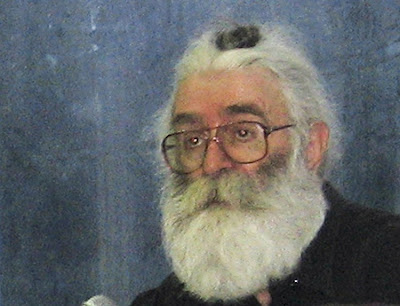 Do you know this old man with long beards? Probably, you might have thought that he is the philosopher or scientists? You are not right in guessing him with the outlook. He is one of the dictator of 20th century, who had killed more than 8000 muslims in Bosnia in between 1992-1996. Below is his real photo when he was in power.
Do you know this old man with long beards? Probably, you might have thought that he is the philosopher or scientists? You are not right in guessing him with the outlook. He is one of the dictator of 20th century, who had killed more than 8000 muslims in Bosnia in between 1992-1996. Below is his real photo when he was in power.

Posted by
Krajend
at
22:04
![]()
Monday 21 July 2008
The profile of first president of Nepal: Dr. Ram Baran Yadav
 neral secretary of the Nepali Congress, the second largest party in the Constituent Assembly (CA), defeated Ram Raja Prasad Singh nominated by the Communist Party of Nepal (Maoist) (CPN-M), the single largest CA party, in the second-round presidential election held on Monday.
neral secretary of the Nepali Congress, the second largest party in the Constituent Assembly (CA), defeated Ram Raja Prasad Singh nominated by the Communist Party of Nepal (Maoist) (CPN-M), the single largest CA party, in the second-round presidential election held on Monday."Nepal has still got many challenges to lead the peace process to a conclusion," Yadhav told Xinhua reporter during the presidential elections, "I would use my all efforts to establish peace and inclusive democracy."
Nepal abolished the 24
 0-year-old Shah monarchy and implemented the federal democratic republic in the first CA meeting on May 28. As a CA member, Ram Baran Yadav won the CA direct elections on April 10, bagging 10,392 votes from Constituency No. 5 of Dhanusa district.
0-year-old Shah monarchy and implemented the federal democratic republic in the first CA meeting on May 28. As a CA member, Ram Baran Yadav won the CA direct elections on April 10, bagging 10,392 votes from Constituency No. 5 of Dhanusa district.He joined politics in the 1960s when the autocratic King Mahendra banned the activities of political parties blocking the democracy and beginning the absolute rule of monarchy. A medical doctor by profession, Yadhav spent more than two decades in hospitals in south Nepal's Terai region before joining the movement of restoration of democracy in Nepal as a full-time politician in the 1990s. He was in the team of doctors who underwent treatment to Nepal's first elected Prime Minister Bishweshwar Prasad Koirala during the last days of his life in the 1980s. "I have been a successful doctor rather than successful politician," he said. B.P. Koirala's social democratic ideology inspired him to be a politician, it is said. As a Madhesi people, he stood firm against the demands of a single autonomous Madhesh state, claimed by some Madhesh-based political parties and played an important role to calm down the agitation that broke out in the southern plains of the country last year. He said he would never support the politics of ethnicity. "It is a nonsense idea to have a single Madhesh (state) because different colors of people live there. The Madhesi people want their right, not a separate territory," he said. Yadav, who was elected into the legislature in 1999, and once served as the state minister, and minister for health in the cabinet in the 1990s led by the Nepali Congress. The 64-year-old president was born in a middle class farmer family in the southern plains of Terai, Sapahi village of Dhanusa district, some 125 km south of the Nepali capital of Kathmandu. "I was born 64 years ago, but according to my birth documents Iam only 61 years old, so the same age is filed on the presidential candidate nomination," the widower with two sons and a daughter revealed. The first president of one of the world's poorest countries says he dreams of a "rich and peaceful country." "The country couldn't progress because of our bad political culture," he said, adding that the country has a big challenge ahead to end the current transition and make the new constitution. "The politics of consensus can only make our people rich and happy. If we unite and make our efforts for developing our small country by utilizing the natural resources and beauty of our country, we can be a rich country soon," said the newly elected president.
Posted by
Krajend
at
18:43
![]()
Sunday 20 July 2008
My hometown Butwal; Nepal
Today, I was sick to see my house and hometown, my country and my people. There are nothing much to find it out, so I took the help of internet. Google earth provided me great help to pacify my thrust to locate my places. I have taken some photos of my places to share with you. Butwal has the long history. In the place, we defeated the mighty British with our local weapons. Our brave men and women, including children and Old, fought with British (then East India Company); who wanted to capture this place. These poor but brave people fought with stones, spears, some home made knifes, Khukuris to mighty British who were armored with cannons, guns etc. They lost the life of Generale Gilespie. And, later flew away.
The story behind the nomenclature of Butwal is that, then British force wanted to reach the citadel. Since the area was densely populated with Shorea and such other kinds of Forest, and there were no infrastructure to proceeds, they bought one Deshdrohi Nepali to show the path. The British soldiers and team were so afraid of the Nepalese fighters, they were asking about what is there, what is there next after each and every steps move. When the reach near to the foothill of Siwaliks hill, the British Generale asked with that spy (unfortunately soldout Nepali), what is thereafter..... The Nepali who had only few english vocabularies, so he wanted to say them that there is the hills. But he didnot know about what to call to the hills. So, he thought different words bud he couldnot found the appropriate word to call. The English Generales and soldiers were asking regularly to say him about what is there. Then, this poor Nepali tried to explain what is there to English people in this way. "Dear Generale, there is nothing but wall". He meant wall for hill. This word "But Wall" later on became Butwal. So, the name Butwal came to existence! My house lies in Sukhanagar, Butwal-10, Lumbini, Nepal
My house lies in Sukhanagar, Butwal-10, Lumbini, Nepal
 Roads seen in and around my area
Roads seen in and around my area Butwal lies on the foothill of Siwalik hills
Butwal lies on the foothill of Siwalik hills Panoromic view of Butwal
Panoromic view of Butwal
 Nepal is the mountainous country, 83 % of its land is covered by mountains (Siwallik, Mahabharat and high Himalayas). 8 out of the ten tallest mountain in the worlds lie in Nepal.
Nepal is the mountainous country, 83 % of its land is covered by mountains (Siwallik, Mahabharat and high Himalayas). 8 out of the ten tallest mountain in the worlds lie in Nepal.
Posted by
Krajend
at
10:49
![]()
Labels: Proud to be Nepali
Saturday 19 July 2008
Pramanda Jha first elected V. president of Nepal
Posted by
Krajend
at
15:38
![]()
Election for First President concluded
The election for firsr president of Republic Nepal has been concluded today. 578 votes were casted. Result is expected to come after few times.
Ram Baran Yaday from NC as president and Pramananda Jha from Madhesi Janadhikar Forum is expected to win the election as Vice president after the unexpected change in Equation.
Read more...
Posted by
Krajend
at
13:58
![]()
Thursday 17 July 2008
Ramraja likely to become first president of Nepal
There are three Rams competing for the post of President of Nepal. Ram Raja Singh, Ram Baran Yadav and Ram Prit Pawwan are fighting for the post. All Rams have long political background. Raja Ram Singh has strong support from NCP, Maoist and supported by Madhesis Parties, so has great chance to win.
Posted by
Krajend
at
18:33
0
comments
![]()
Wednesday 16 July 2008
Few memorable moments with B.R. Rijal
JASLE SADHAI DIYO MATRA:::::::::::::::::::::::::::::::::::::::::::::::::::::::::::::::::::::::::
B.R. Rijal who is always happy to help others...........



Posted by
Krajend
at
19:42
![]()
BABU RAM RIJAL leaves Goettingen
 Nowadays, we are loosing our Nepalese friends from Goettingen. Some friends had already left Goettingen after completion of their study in respective fields. Few friends are in outside Goettingen for their research work.
Nowadays, we are loosing our Nepalese friends from Goettingen. Some friends had already left Goettingen after completion of their study in respective fields. Few friends are in outside Goettingen for their research work.
Posted by
Krajend
at
19:05
![]()
Tuesday 15 July 2008
Kumari - Living Goddess - Nepal
She is the small girl and she is being worshipped as the living goddess since centruries. This is the unique tradition in Nepal and important to preserve.
Posted by
Krajend
at
12:31
0
comments
![]()
Barrack Obama's controversial cartoon on New Yorker
 rifle slung over her back. A picture of Usama bin Laden hangs above the mantel of the fireplace, which has an American flag burning in it.
rifle slung over her back. A picture of Usama bin Laden hangs above the mantel of the fireplace, which has an American flag burning in it.The July 21 cover, titled “The Politics of Fear,” is intended to be a parody, an attempt to show how “scare tactics and misinformation” are being used to try to derail Barack Obama’s campaign, says cover artist Barry Blitt. “I think the idea that the Obamas are branded as unpatriotic [let alone as terrorists] in certain sectors is preposterous,” Blitt wrote in an e-mail to the Huffington Post. “It seemed to me that depicting the concept would show it as the fear-mongering ridiculousness that it is.”
The Obama campaign has had to fight an intensive e-mail spam campaign that claims Obama is secretly a Muslim, and his wife is a black radical. Campaign spokesman Bill Burton called the New Yorker cover over the top.
“The New Yorker may think, as one of their staff explained to us, that their cover is a satirical lampoon of the caricature Senator Obama’s right-wing critics have tried to create,” Burton said.
“But most readers will see it as tasteless and offensive. And we agree.” Obama did not reply to a question about the cover when he answered reporters’ questions on Sunday in San Diego. John McCain’s campaign also slammed the cover as “tasteless and offensive.” The New Yorker editors also issued a statement Monday saying the cover “combines a number of fantastical images about the Obamas and shows them for the obvious distortions they are.”
“The burning flag, the nationalist-radical and Islamic outfits, the fist-bump, the portrait on the wall? All of them echo one attack or another. Satire is part of what we do, and it is meant to bring things out into the open, to hold up a mirror to prejudice, the hateful, and the absurd. And that’s the spirit of this cover,” reads the statement.
Posted by
Krajend
at
08:55
![]()
Monday 14 July 2008
Department of Education Vs Ministry of Education: Contradiction
 Quite interestingly, the department of Education in Nepal is under Nepal government and the ministry of Education and sports, is still under His Majesty's Government of Nepal. Why is this dubicity. The department under same ministry falls under Nepal Government and the Ministry itself likes to be under HMG/Nepal.
Read more...
Quite interestingly, the department of Education in Nepal is under Nepal government and the ministry of Education and sports, is still under His Majesty's Government of Nepal. Why is this dubicity. The department under same ministry falls under Nepal Government and the Ministry itself likes to be under HMG/Nepal.
Read more...
Posted by
Krajend
at
14:59
![]()
Saturday 12 July 2008
Paudel family at UK (III)

These are some glimpses from recent visit to London. Our senior member of Goettingeli Nepalese Samaj visited remarkable places in London. They were there from July2, 2008 to 10 July, 2008. During their one week stay in UK, they experienced some magical moments there. Getting union with relatives, friends compounded with visits to heart touching places were the landmark of their visit.
Lok Nath Paudel's recent visit to London
 Lok Nath Paudel and Usha Paudel in London.
Lok Nath Paudel and Usha Paudel in London. Tribute to peace: Paudel family with statue of Nelson Mandela in London (UK)
Tribute to peace: Paudel family with statue of Nelson Mandela in London (UK) Paudel family with daughter in London (London Tower Bridge on background)
Paudel family with daughter in London (London Tower Bridge on background) Paudel family at London Tower Bridge, UK
Paudel family at London Tower Bridge, UK
Friday 11 July 2008
Sir Isaac Newton
Sir Isaac Newton, FRS (4 January 1643 – 31 March 1727 [OS: 25 December 1642 – 20 March 1727]) was an English physicist, mathematician, astronomer, natural philosopher, alchemist and theologian. His Philosophiæ Naturalis Principia Mathematica, published in 1687, is considered to be
 the most influential book in the history of science. In this work, Newton described universal gravitation and the three laws of motion, laying the groundwork for classical mechanics, which dominated the scientific view of the physical universe for the next three centuries and is the basis for modern engineering. Newton showed that the motions of objects on Earth and of celestial bodies are governed by the same set of natural laws by demonstrating the consistency between Kepler's laws of planetary motion and his theory of gravitation, thus removing the last doubts about heliocentrism and advancing the scientific revolution.
the most influential book in the history of science. In this work, Newton described universal gravitation and the three laws of motion, laying the groundwork for classical mechanics, which dominated the scientific view of the physical universe for the next three centuries and is the basis for modern engineering. Newton showed that the motions of objects on Earth and of celestial bodies are governed by the same set of natural laws by demonstrating the consistency between Kepler's laws of planetary motion and his theory of gravitation, thus removing the last doubts about heliocentrism and advancing the scientific revolution.In mechanics, Newton enunciated the principles of conservation of momentum and angular momentum. In optics, he invented the reflecting telescope and developed a theory of colour based on the observation that a prism decomposes white light into a visible spectrum. He also formulated an empirical law of cooling and studied the speed of sound.
In mathematics, Newton shares the credit with Gottfried Leibniz for the development of calculus. He also demonstrated the generalized binomial theorem, developed the so-called "Newton's method" for approximating the zeroes of a function, and contributed to the study of power series.
In a 2005 poll of the Royal Society asking who had the greater effect on the history of science, Newton was deemed much more influential than Albert Einstein.
Early years:
Isaac Newton was born December 25 1642 [OS: 25 December 1642] at Woolsthorpe Manor in Woolsthorpe-by-Colsterworth, a hamlet in the county of Lincolnshire. At the time of Newton's birth, England had not adopted the latest papal calendar and the
 refore his date of birth was recorded as Christmas Day, 25 December 1642. Newton was born three months after the death of his father. Born prematurely, he was a small child; his mother Hannah Ayscough reportedly said that he could have fit inside a quart mug. When Newton was three, his mother remarried and went to live with her new husband, the Reverend Barnabus Smith, leaving her son in the care of his maternal grandmother, Margery Ayscough. The young Isaac disliked his stepfather and held some enmity towards his mother for marrying him, as revealed by this entry in a list of sins committed up to the age of 19: Threatening my father and mother Smith to burn them and the house over them.
refore his date of birth was recorded as Christmas Day, 25 December 1642. Newton was born three months after the death of his father. Born prematurely, he was a small child; his mother Hannah Ayscough reportedly said that he could have fit inside a quart mug. When Newton was three, his mother remarried and went to live with her new husband, the Reverend Barnabus Smith, leaving her son in the care of his maternal grandmother, Margery Ayscough. The young Isaac disliked his stepfather and held some enmity towards his mother for marrying him, as revealed by this entry in a list of sins committed up to the age of 19: Threatening my father and mother Smith to burn them and the house over them.Newton began his schooling in the village schools and was later sent to The King's School, Grantham, where he became the top student in the school. At King's, he lodged with the local apothecary, William Clarke and eventually became engaged to the apothecary's stepdaughter, Anne Storer, before he went off to the University of Cambridge at the age of 19. As Newton became engrossed in his studies, the romance cooled and Miss Storer married someone else. It is said he kept a warm memory of this love, but Newton had no other recorded "sweet-hearts" and never married.
There are rumours that he remained a virgin.However, Bell and Eves' sources for this claim, William Stukeley and Mrs. Vincent (the former Miss Storer — actually named Katherine, not Anne), merely say that Newton entertained "a passion" for Storer while he lodged at the Clarke house. From the age of about twelve until he was seventeen, Newton was educated at The King's School, Grantham (where his signature can still be seen upon a library window sill). He was removed from school, and by October 1659, he was to be found at Woolsthorpe-by-Colsterworth, where his mother, widowed by now for a second time, attempted to make a farmer of him. He was, by later reports of his contemporaries, thoroughly unhappy with the work. It appears to have been Henry Stokes, master at the King's School, who persuaded his mother to send him back to school so that he might complete his education. This he did at the age of eighteen, achieving an admirable final report.
In June 1661, he was admitted to Trinity College, Cambridge. According to John Stillwell, he entered Trinity as a sizar. At that time, the college's teachings were based on those of Aristotle, but Newton preferred to read the more advanced ideas of modern philosophers such as Descartes and astronomers such as Copernicus, Galileo, and Kepler. In 1665, he discovered the generalized binomial theorem and began to develop a mathematical theory that would later become calculus. Soon after Newton had obtained his degree in August of 1665, the University closed down as a precaution against the Great Plague. Although he had been undistinguished as a Cambridge student, Newton's private studies at his home in Woolsthorpe over the subsequent two years saw the development of his theories on calculus, optics and the law of gravitation.
Middle years :
Most modern historians believe that Newton and Leibniz had developed calculus independently, using their own unique notations. According to Newton's inner circle, Newton had worked out his method years before Leibniz, yet he published almost nothing about it until 1693, and did not give a full account until 1704. Meanwhile, Leibniz began publishing a full account of his methods in 1684. Moreover, Leibniz's notation and "differential Method" were universally adopted on the Continent, and after 1820 or so, in the British Empire. Whereas Leibniz's notebooks show the advancement of the ideas from early stages until maturity, there is only the end product in Newton's known notes. Newton claimed that he had been reluctant to publish his calculus because he feared being mocked for it. Newton had a very close relationship with Swiss mathematician Nicolas Fatio de Duillier, who from the beginning was impressed by Newton's gravitational theory. In 1691 Duillier planned to prepare a new version of Newton's Philosophiae Naturalis Principia Mathematica, but never finished it. Some of Newton's biographers have suggested that the relationship may have been romantic. However, in 1694 the relationship between the two men cooled down. At the time, Duillier had also exchanged several letters with Leibniz. Starting in 1699, other members of the Royal Society (of which Newton was a member) accused Leibniz of plagiarism, and the dispute broke out in full force in 1711. Newton's Royal Society proclaimed in a study that it was Newton who was the true discoverer and labeled Leibniz a fraud. This study was cast into doubt when it was later found that Newton himself wrote the study's concluding remarks on Leibniz. Thus began the bitter Newton v. Leibniz calculus controversy, which marred the lives of both Newton and Leibniz until the latter's death in 1716. Newton is generally credited with the generalized binomial theorem, valid for any exponent. He discovered Newton's identities, Newton's method, classified cubic plane curves (polynomials of degree three in two variables), made substantial contributions to the theory of finite differences, and was the first to use fractional indices and to employ coordinate geometry to derive solutions to Diophantine equations. He approximated partial sums of the harmonic series by logarithms (a precursor to Euler's summation formula), and was the first to use power series with confidence and to revert power series. He also discovered a new formula for calculating pi.
He was elected Lucasian Professor of Mathematics in 1669. In that day, any fellow of Cambridge or Oxford had to be an ordained Anglican priest. However, the terms of the Lucasian professorship required that the holder not be active in the church (presumably so as to have more time for science). Newton argued that this should exempt him from the ordination requirement, and Charles II, whose permission was needed, accepted this argument. Thus a conflict between Newton's religious views and Anglican orthodoxy was averted.
Newton's apple
A popular story claims that Newton was inspired to formulate his theory of universal gravitation by the fall of an apple from a tree. Cartoons ha
 ve gone further to suggest the apple actually hit Newton's head, and that its impact somehow made him aware of the force of gravity. John Conduitt, Newton's assistant at the Royal Mint and husband of Newton's niece, described the event when he wrote about Newton's life:
ve gone further to suggest the apple actually hit Newton's head, and that its impact somehow made him aware of the force of gravity. John Conduitt, Newton's assistant at the Royal Mint and husband of Newton's niece, described the event when he wrote about Newton's life:The question was not whether gravity existed, but whether it extended so far from Earth that it could also be the force holding the moon to its orbit. Newton showed that if the force decreased as the inverse square of the distance, one could indeed calculate the Moon's orbital period, and get good agreement. He guessed the same force was responsible for other orbital motions, and hence named it "universal gravitation".
A contemporary writer, William Stukeley, recorded in his Memoirs of Sir Isaac Newton's Life a conversation with Newton in Kensington on 15 April 1726, in which Newton recalled "when formerly, the notion of gravitation came into his mind. It was occasioned by the fall of an apple, as he sat in contemplative mood. Why should that apple always descend perpendicularly to the ground, thought he to himself. Why should it not go sideways or upwards, but constantly to the earth's centre." In similar terms, Voltaire wrote in his Essay on Epic Poetry (1727), "Sir Isaac Newton walking in his gardens, had the first thought of his system of gravitation, upon seeing an apple falling from a tree." These accounts are probably exaggerations of Newton's own tale about sitting by a window in his home (Woolsthorpe Manor) and watching an apple fall from a tree.
Various trees are claimed to be "the" apple tree which Newton describes. The King's School, Grantham, claims that the tree was purchased by the school, uprooted and transported to the headmaster's garden some years later, the staff of the National Trust-owned Woolsthorpe Manor dispute this, and claim that a tree present in their gardens is the one described by Newton. A descendant of the original tree can be seen growing outside the main gate of Trinity College, Cambridge, below the room Newton lived in when he studied there. The National Fruit Collection at Brogdale can supply grafts from their tree (ref 1948-729), which appears identical to Flower of Kent, a coarse-fleshed cooking variety.
Posted by
Krajend
at
21:58
![]()
Labels: great personality














